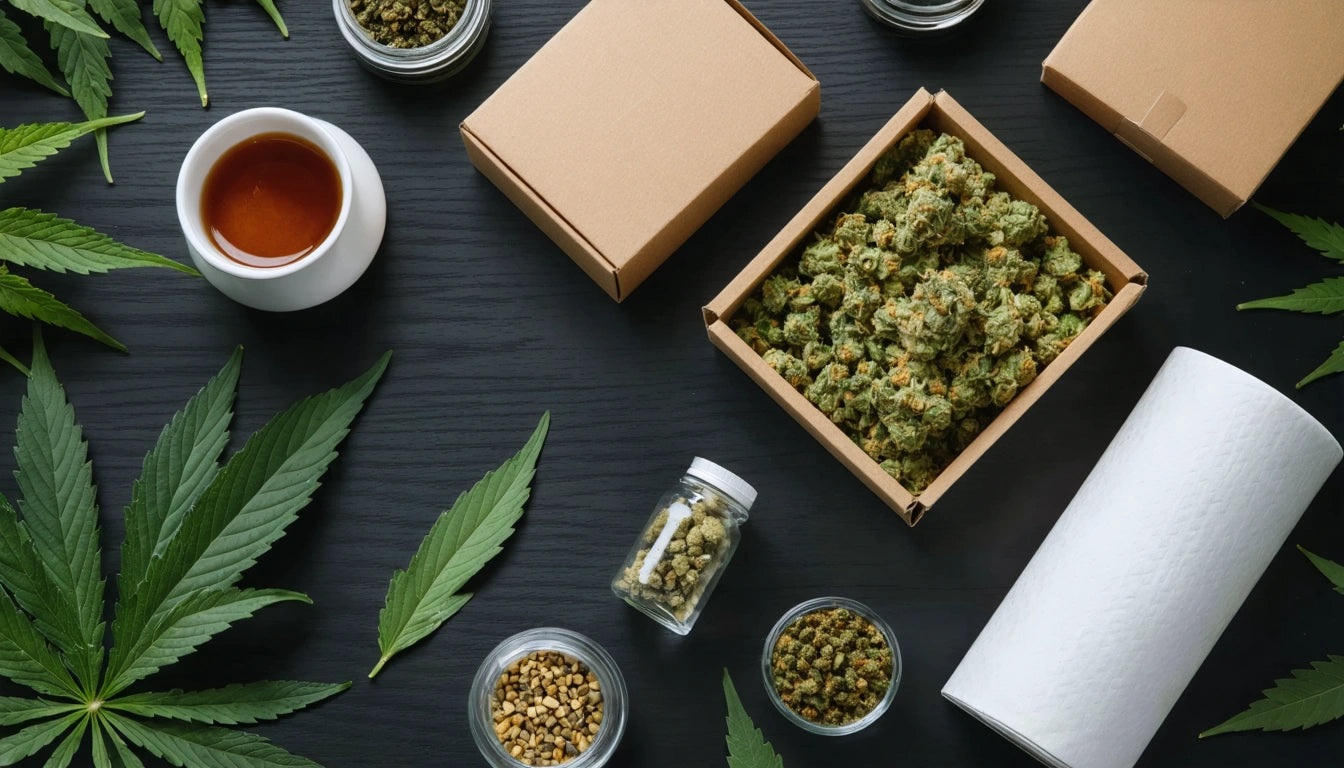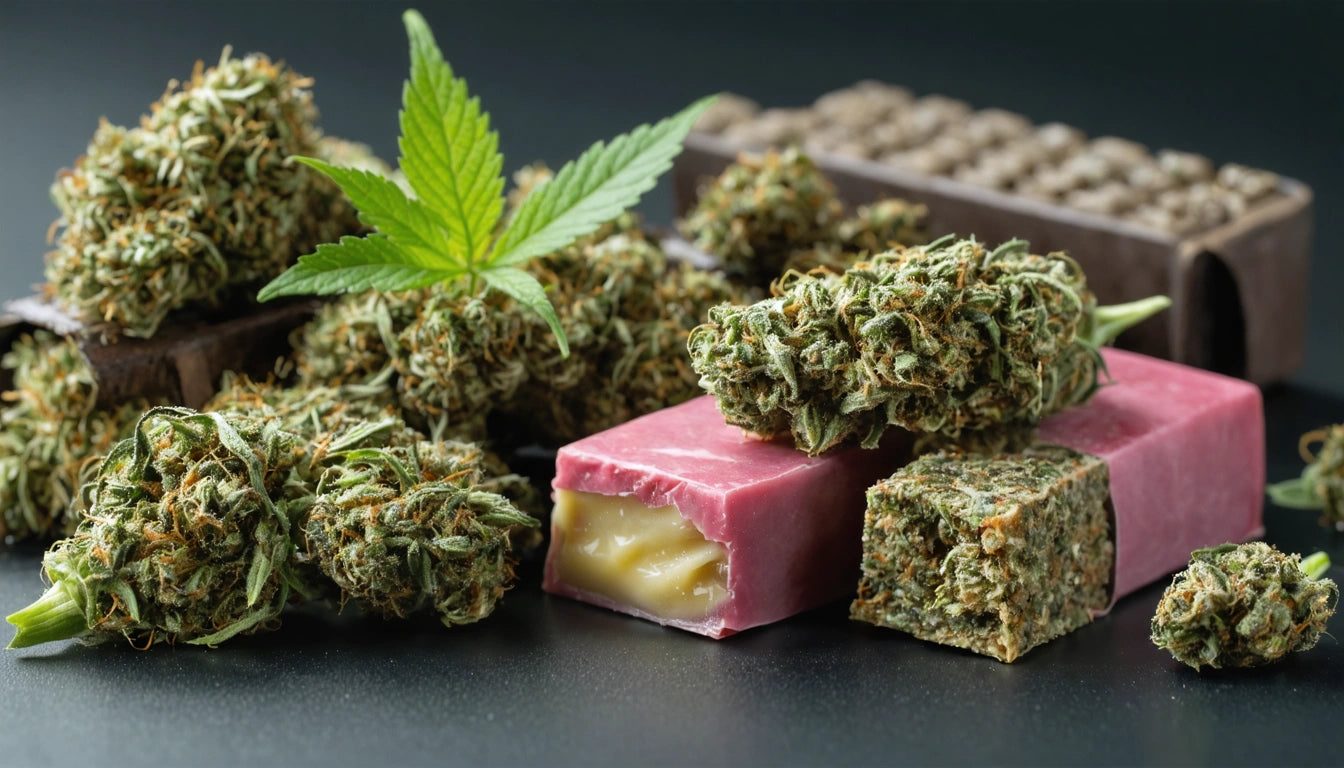Table of Contents
- Terpene Preservation Challenges in Cannabis Products
- How Packaging Materials Impact Cannabinoid Stability
- Temperature and Light: Critical Factors in Preservation
- Concentrate-Specific Packaging Solutions
- Balancing Compliance with Preservation Needs
- Innovation and Future Direction in Preservation-Focused Packaging
Cannabis product quality depends significantly on the preservation of terpenes and cannabinoids after processing. These compounds are volatile and sensitive to environmental factors, making packaging selection a critical decision for producers focused on delivering consistent experiences to consumers. The right packaging not only maintains product integrity but also enhances shelf life and preserves the therapeutic and sensory qualities that differentiate premium products.
Terpene Preservation Challenges in Cannabis Products
Terpenes, the aromatic compounds responsible for cannabis's distinctive scents and flavors, are highly volatile and begin degrading immediately after harvest. These compounds evaporate at room temperature and oxidize when exposed to air, resulting in flat aromas and diminished effects. Similarly, cannabinoids like THC and CBD degrade when exposed to oxygen, light, and heat, converting to less desirable compounds like CBN.
The preservation challenge is particularly acute for concentrates, which contain higher levels of both terpenes and cannabinoids. According to research on concentrate shelf stability, products can lose up to 40% of their terpene content within just four weeks when improperly packaged.
How Packaging Materials Impact Cannabinoid Stability
The material choice for cannabis packaging significantly influences preservation outcomes:
Glass Containers
Glass remains the gold standard for terpene preservation due to its non-reactive nature and excellent oxygen barrier properties. Amber or opaque glass provides additional protection against light degradation. For concentrates specifically, glass containers with silicone liners prevent product loss while maintaining an airtight environment.
Silicone Containers
While convenient for certain concentrate types, silicone has been shown to absorb terpenes over time, potentially altering product profiles. This makes silicone suitable for short-term storage but problematic for preserving complete terpene profiles long-term.
Plastic and Polymers
Advances in plastic technology have improved options, with PTFE-lined caps and high-density polyethylene (HDPE) offering better preservation than traditional plastics. However, these materials still permit some oxygen permeation and can interact with terpenes.
Temperature and Light: Critical Factors in Preservation
Environmental factors work in conjunction with packaging materials to either preserve or degrade cannabis compounds:
- UV light accelerates cannabinoid degradation, converting THC to CBN
- Heat speeds terpene evaporation and chemical changes
- Humidity fluctuations can promote microbial growth and terpene loss
- Oxygen exposure triggers oxidation of both cannabinoids and terpenes
These challenges require comprehensive packaging solutions. According to research on temperature and light effects, packaging that addresses all four factors can extend product shelf life by 300% or more compared to basic packaging.
Concentrate-Specific Packaging Solutions
Concentrates present unique preservation challenges due to their consistency and compound concentration:
Solutions for Different Extract Types
Different concentrate consistencies require tailored approaches. For example, packaging for crumble and wax differs from solutions for oils and distillates. Solventless extracts like rosin and hash require especially careful handling to maintain their delicate terpene profiles.
Innovations in Applicators and Dispensers
The industry has developed specialized tools like disposable dab applicators that minimize exposure during use. These solutions help preserve product integrity even after packaging is opened by the consumer.
Balancing Compliance with Preservation Needs
Regulatory requirements add another layer of complexity to preservation-focused packaging. Child-resistant features are mandatory in most markets, as safety regulations for potentially harmful substances apply to cannabis products just as they do to pharmaceuticals and chemicals.
The challenge lies in implementing these safety features without compromising the airtight seals needed for preservation. Innovative solutions include:
- Push-and-turn caps with PTFE liners that maintain an oxygen barrier
- Child-resistant glass jars with integrated humidity control
- Certified compliant packaging with UV protection coatings
These solutions demonstrate that compliance and preservation can work together rather than in opposition. Manufacturers are increasingly finding ways to satisfy regulatory requirements while still delivering optimal product protection.
Innovation and Future Direction in Preservation-Focused Packaging
The cannabis packaging industry continues to evolve with new technologies specifically addressing terpene and cannabinoid preservation:
Active Packaging Technologies
Beyond passive barriers, active packaging technologies are emerging that actively protect compounds:
- Oxygen scavengers that remove oxygen from the container headspace
- Humidity control inserts that maintain optimal moisture levels
- Temperature-indicating labels that warn of potential degradation
Sustainable Preservation Solutions
The industry is also addressing environmental concerns while maintaining preservation standards. Eco-friendly concentrate packaging options now include biodegradable materials with effective oxygen and light barrier properties.
As the cannabis market matures, packaging that preserves the complete profile of terpenes and cannabinoids will become an increasingly important differentiator for premium brands. Consumers are becoming more educated about the importance of these compounds, creating market pressure for solutions that deliver the intended experience from first use to last.











Leave a comment
All comments are moderated before being published.
This site is protected by hCaptcha and the hCaptcha Privacy Policy and Terms of Service apply.